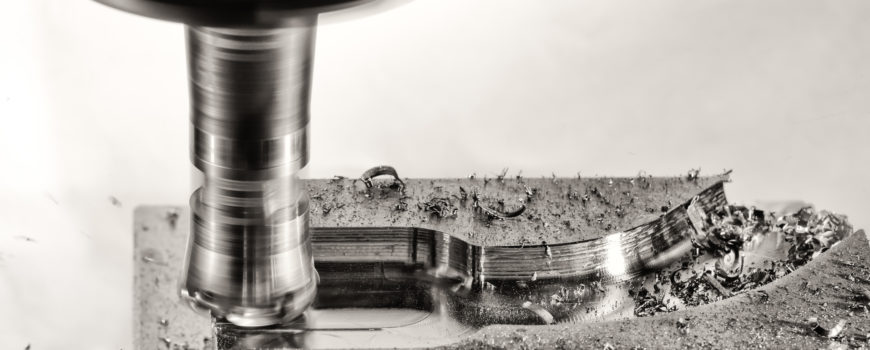According to the US mechanical engineering schools, high-speed machining can be defined in two different ways. However, the most commonly used definition is based on the relative surface speed between the workplace and the CNC manufacturing tool. This definition is primarily a thermo limit since most of the CNC mechanisms depend on temperature. According to surface speed definition, high-speed CNC machining is favored by metal cutting researchers and toolmakers from US manufacturing department.
Researchers and tool makers define high-speed machining by indicating the range of a transitional region which is yellow, conventional machining region which is green and high-speed region which is red and depend on surface speed. The surface speed is in meters per minute, and its equivalent to v=πdn where n is spindle speed and d is the diameter of the milling work piece.
The second definition which is widely used by mechanical engineering schools is the DN number that is centered on the rotation capability of the loaded spindle bearings. D is the diameter in mm of the larger bearing bore, and N is the spindle speed in rpm.
High-Speed Machining Principles
High-speed machining operates on several principles. Keep in mind that not every type of machining will benefit from HSM, but most applications could from HMS with implementation of CNC automation and assumptions. Below are high-speed machine principles.
CNC machine
Tool holders
Cutting tools
CAD system
CAM system
How Does High-Speed Machining Help?
Every machining shop desires high productivity and improved machining process. Machinists make complicated metal parts, shapes and need to run complicated programs to help them provide good services to their clients. Machinists use high-speed machining to make their work faster and easier. Here are some benefits of using high-speed machining.
Reduced Energy or Heat Loss
High-speed machining helps in increasing the rate and speed of material cutting which reduces excessive heat loss and transfer. When you reduce heat transfer, turnaround time and transmission are kept low which lowers energy consumption. Traditionally, time was provided for metals to cool down and form a hardened metal but in this case, the coolant is used in metal cooling which reduces heat loss and increases the speed of production since less time is spent on cooling.
Increased Productivity Rate
High-speed machining has driven manufacturers and machining shops to higher rates of productivity. Faster productivity rates mean the machines can produce more parts in a short period. However, the functionality of high-speed machining is often affected by the ability of the cutting materials themselves. Manufacturing in USA prefer the use of faster cutters since their productivity is high.
Even if all cutters are faster, the results produced by cutters of different materials are unique. For instance, diamond, ceramics, HSS, tungsten carbide and cermets cutters all provide different outputs. High-speed cutting tools can take a lot of time and may even lead to stress. The main problem that is associated with high-speed cutting tools is that they don’t manage heat effectively and require a coolant.


